Ang Manila Bay: Reclaiming Lives ay serye ng imbestigatibo, naratibo at in-depth na mga ulat hinggil sa mga buhay at pakikibaka ng mga komunidad at mamamayang apektado ng malawakang reklamasyon sa kahabaan ng baybayin ng Manila Bay sa ilalim ng programang pang-imprastraktura na Build Build Build ng rehimeng Duterte.
Taliptip in Bulakan, Bulacan was once a lively fishing community of 700 families. Now, only seven families are left in its coastal sitios. And soon, they too will have to leave.
Fisherfolk stop casting their nets even when the water is calm. By October 2020, if residents and non-government organizations are unable to stop the 2,500-hectare reclamation project of the San Miguel Corporation (SMC) and its Aerotropolis/Aerocity/New Manila International Airport project. Taliptip will be radically changed forever – but not for the better.
The death knell, as it were, was delivered this Sept. 23 by the Senate Committee on Public Services, which approved the franchise application of San Miguel to building the project.
Based on the SMC’s press release, the P734 Billion project will have four runways, with enough space to expand to six and will be capable of handling up to 100 million passengers per year. It will be part of a larger infrastructure ecosystem that will connect seamlessly with existing expressways and mass rail transits that will connect it to both southern and northern Luzon.
But the SMC’s Aerotropolis project has already destroyed many fishing communities. Soon, it will also wreak devastation on Taliptip and the rest of Manila Bay’s marine ecosystem.
According to lawyer Gloria Ramos of Oceana Philippines, the reclamation project will require 205 million cubic meters of fill materials or an equivalent of 20 million dump trucks full of dirt, soil, and rocks to reclaim the sea.
The people of Taliptip, environmentalists, non-government organizations, the academe, and scientists have been strongly opposed to SMC’s Aerocity.
‘Kahit kailan, walang iwanan’?
All this time, even as they continued to protest against the SMC’s Aerotropolis, the fisherfolk called on the powerful conglomerate to heed calls for a livable relocation site where they can still fish. In a Manifesto of Unity – a network of fisherfolk, church people, and civil society organizations, AKAP KA Manila Bay echoed their demands and said that the affected residents should also be given fishing implements so that they can continue their livelihood.
One of the allies of the affected residents, Fr. Francis Cortez of the Bulacan Ecumenical Forum said that SMCs approach to this entire issue is tainted and insincere.
“When they were still trying to convince the people to agree to the project, they presented housing and livelihood projects (that) they said they implemented in other areas where they had projects. When the project was already approved, however, they just resorted to paying off people and simply told them to leave their houses,” he said.
According to an organizer of AKAP KA Manila Bay, Taliptip residents were asked to choose between cash assistance of P150,000 or a relocation site. But the residents would not want to leave unless they are assured of their source of livelihood. Pushed to desperation though, if they opt for relocation, they would have to stay at the Bulakan Evacuation Center until June 2020, until SMC finds and develops the relocation site. People balked at this, and in the end, the negotiations fell through. That was in December 2019.
By the start of 2020, SMC, whose revenue in 2018 is P1.02 Trillion took back its housing project offer. Instead, the SMC told people to accept a P250,000 offer . The condition was for them to voluntarily dismantle their houses, take a photo of it, before they be paid.
Out of 700 families, only 11 agreed to the SMC’s offer. But would the P250,000 be enough to build a new house? According to licensed architect Jundy Caldito, “Building a house, even a subpar one, would already cost P12,000 per square meter.” This means that a 36 sq. m house would cost at least P432,000.
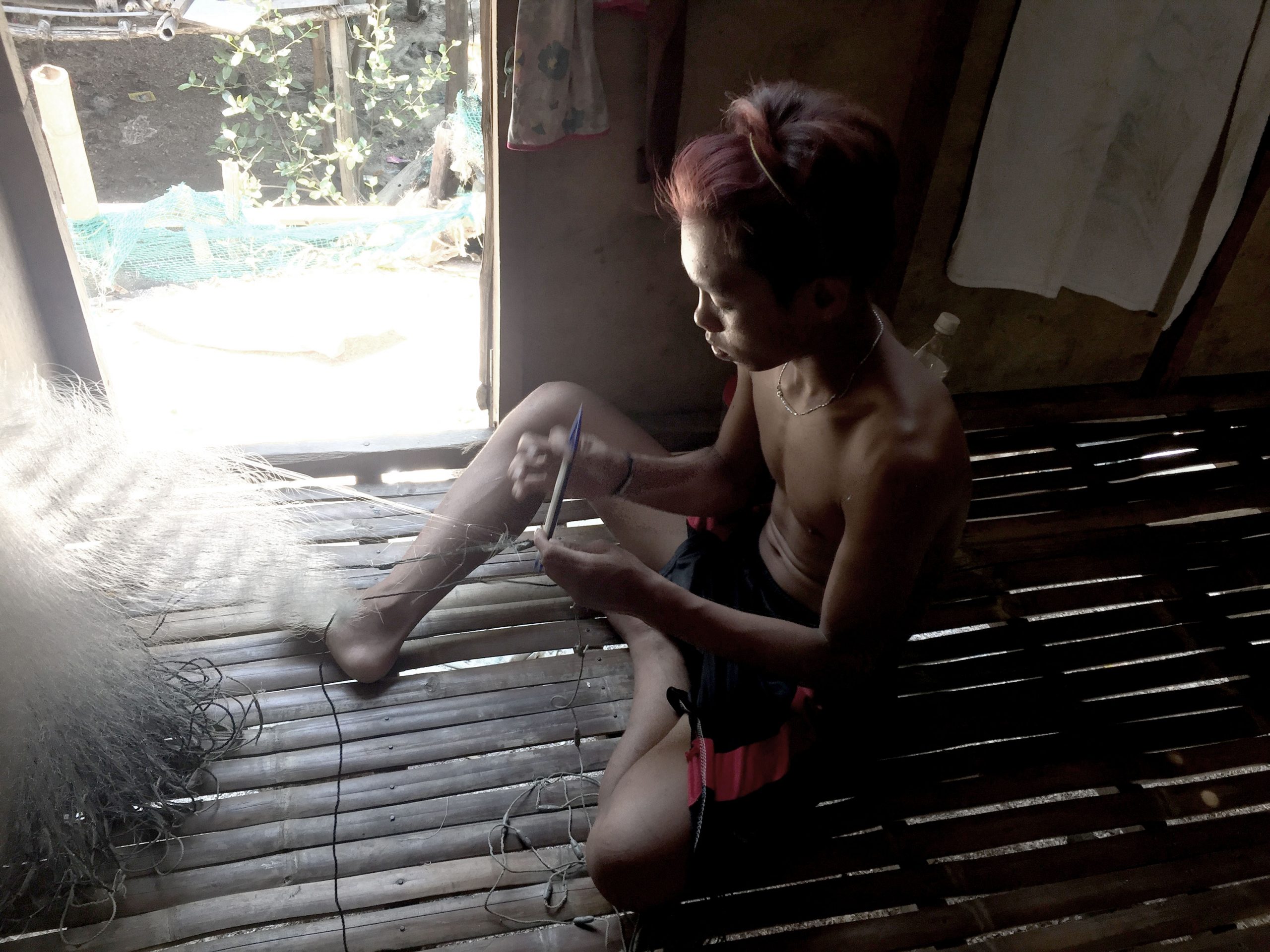
Taliptip fisherfolk: slowly disappearing. Francis Villabroza
Pandemic’s impact
When the national and local governments enforced lockdowns on communities due to the coronavirus disease 2019 (Covid-19) pandemic, life became harder for the people of Taliptip.
They faced the same hardships as other Filipinos all over the country: lost jobs and livelihood, as msany were prohibited from leaving their homes. Fishermen could not cast their nets to fish, but on the days when they were finally allowed to do so, they were not allowed to sell their catch, or the prices were so low they practically amounted to nothing: they were forced to sell crabs at P10 per kilo.
Then there are also the harassment operations of the 48th Infantry Battalion of Philippine Army whose soldiers kept moving around the communities, threatening and delivering ultimatums against the fisherfolk.
Since December 28 of last year, soldiers have been making rounds in Kinse and Dapdap, two of the sitios where resistance to the Aerotroplis project is strong. Soldiers alleged that they were on the look-out for a rebel encampment and against suspicious outsiders. Residents themselves, however, continued to welcome said “outsiders” — students, church people, scientists, and journalists – all of whom support them in their flight to resist the reclamation project.
The lockdown and the pandemic have not stopped soldiers from their harassment. The soldiers’ continued presence hound residents and hampers their day-to-day lives.
Forced by extremely difficult circumstances, one by one, families began to give in to SMC and accept the cash buyout. According to SMC’s press release dated August 15 this year, of the 700 families affected, 277 households were included in the financial assistance, while 92 who were previously disqualified were also considered to receive the “cash assistance”, bringing the total to 369 recipient-families.
What will happen to the remaining 331 families who were not given assistance was not mentioned in the press release.
Fisherman Mervic Canete, 29, of Sitio Pariahan, Brgy. Taliptip has not received anything. He has been living in Taliptip for eight years. His wife Joselyn was born in Taliptip and has lived there all her life.
Pariahan is a community with a cluster of houses on stilts above the sea. Several houses are built close to each other, making it look like a giant stilt house made of bamboo and wood. Like Mervic’s house, most houses in Pariahan are shared spaces. Houses have common kitchens or bathrooms. The closely huddled structures also make them more resistant to strong winds and sea waves.
Mervic said that he was excluded from receiving help simply because SMC counted households and not families.
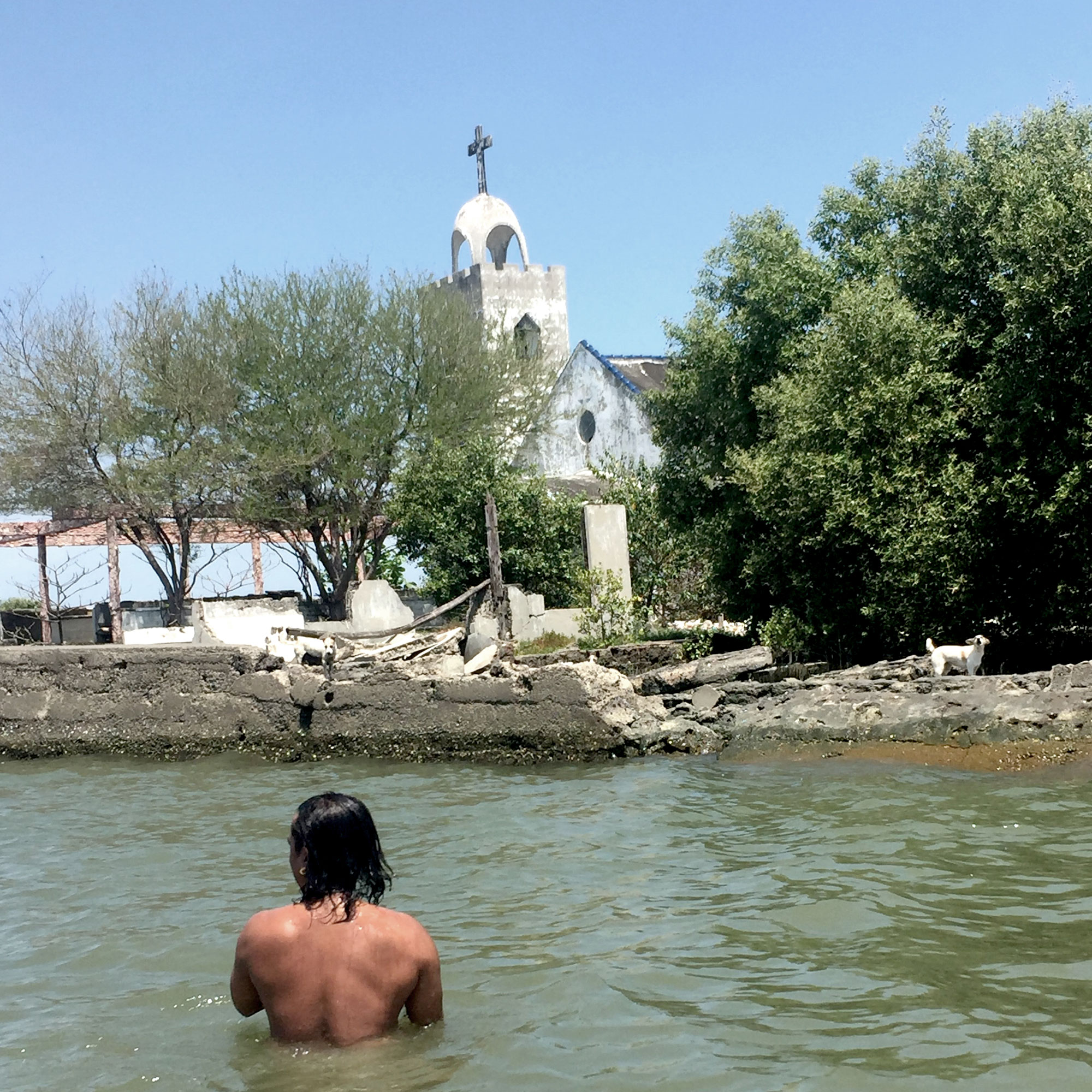
A resident dips into the waters that have submerged much of the community. Francis Villabroza
Marginalized, discounted
“The SMC people said that since my mother-in-law was already given assistance, and my family shares a common kitchen and bathroom with my wife’s mother, I was disqualified from receiving any cash assistance,” he said.
A life divorced from fishing has been hard for them. In July, Mervic and his family tried to go back to Pariahan, only to be threatened with an estafa case. He said that SMC people threatened to file estafa cases against him because he was returning to his old house when his mother-in-law had already accepted P250,000.
“My family and my mother-in-law’s family may have lived together in one house, but our living expenses were separate. Now the SMC says it will charge with estafa when I never accepted anything from them or signed any document,” he said.
“We’re not demanding much, but the fact is we’re being forced to leave our community and start elsewhere. Don’t we deserve help? We’re facing so much uncertainty, but SMC doesn’t care, and we’re not hearing anything from the local or national governments either,” Mervic said. When before he lived rent-free, Mervic and his family now have to pay rent for a small house in Taliptip’s town proper. He has also been forced to learn to do construction work as a laborer.
In Kinse, seven families including the family of Teody Bacon and his mother Nanay Tessie refused to accept the offer until they were provided homes, not just cash assistance.
Teody, 45, is a fisherman who has lived all his life in Taliptip, is one of the residents vocal against SMCs Aerotropolis.
Teresita Bacon, or Nanay Tessie, 65, is also a resident of Sitio Kinse and lives there with some of her children and grandchildren. All of them make a living selling alimango and alimasag that get trapped in the nets they set up near and around the many fish pens around Manila Bay on the side of Bulakan.
Teody said in a June 20 interview with Altermidya‘s newscast Alab: “We want to tell this giant corporation that since what they took from us is our community, it is only right that they replace it with another community. We should be given houses to replace what they forced us to destroy.”
Up to now, the seven families in Sitio Kinse including Teody and Nanay Tessie still live in Sitio Kinse, awaiting the promised relocation of the SMC in another barangay.
In a CNN report, dated June 15, the SMC said it plans to start construction and dumping of fill on Manila Bay this October. Already, even those who received cash assistance face uncertainty as the pandemic and the crisis has been hitting them hard. Many of the fishermen used the money to pay off debts and buy food and pay the rent for their temporary homes as it is already impossible to fish the seas of Taliptip. Others travelled back to their provinces of origin.
Fr. Cortez said, “It’s mind-boggling how San Miguel decided to give people ultimatum at a time when the people badly needed their homes and means of living.”
Reclamation project vs life
Experts have estimated that the loss of mangrove forests due to the Aerotropolis’ contstruction will severely affect fish catch in Bulakan.
A Coastal Resource Management Project by the progressive scientists’ group Agham (Advocates of Science and Technology for the People), revealed that 670 kilos of fish catch will be lost for every hectare of damaged mangrove. Some 24 hectares of fishing reservation areas will also be reclaimed, leading to the loss of some traditional fish species. The already dwindling catch of local fisherfolk will be adversely affected.
This, in turn, will affect the country’s food security as a whole.
Bulakan, known as one of the key biodiversity areas in the country, is home to 22 types of mangroves including Api-api, a firm type of mangrove. These mangrove forests serve as nurseries for fish and purify or filter impurities that go into the sea. It also serves a very effective carbon sink, that is, it absorbs a lot of carbon which is very important to fight the effects of global warming.
“Even kids would wake up at dawn to catch crabs and shrimps using the method of pangangapa or using their bare hands by groping on rock corners and sand to catch shrimps, crabs and other types of shellfish. The earnings they get from there they use as their allowance on schooldays,” Teody said.
Mervic added that on a good day, he used to earn up to P1,000 just by groping for fish.
“Life was good. If in other places, people hardly eat thrice a day. When you live near the sea, it is possible to eat more than thrice a day if you had rice. The sea supplies the fish and the crabs,” Mervic said.
But all that is in the past. Today, they do not know where to get food.
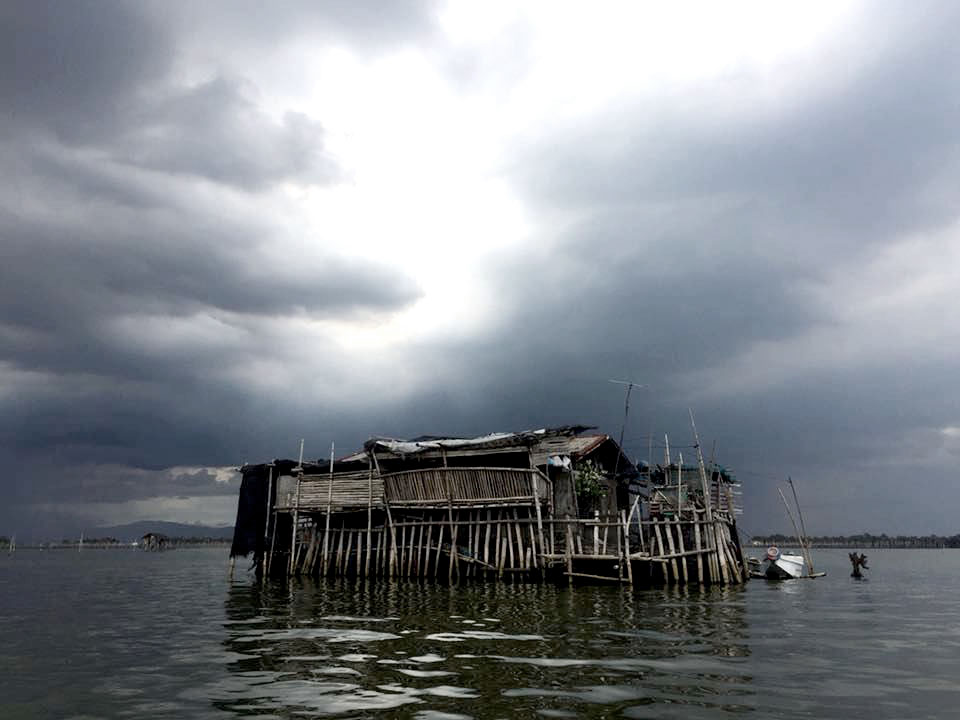
A house above the waters in Taliptip. Francis Villabroza
Environmental cost
Narod Eco, a researcher for the Marine Science Institute of the University of the Philippines, explained that the Coastal Manila Bay including the site for the New Manila International Airport is highly susceptible to several geological hazards such as rapid land subsidence, sea-level rise, storm surge, and liquefaction.
“The project of San Miguel will worsen the effects of these hazards to the people living in and around the area, and even to those who will be working and living on the said Aerotropolis,” he added.
Rapid land subsidence or the lowering of the surface closer to sea level delays runoff from rains and enhances both flooding and tidal incursions. This enhances the effects of floods and high tides.
With land subsidence, the effects of storm surge or the rise of the sea due to storms make it more dangerous. The gently sloping seafloor of Manila Bay makes storm surges potentially more destructive while earthquake-related hazards such as liquefaction cause man-made structures to sink, tilt, or topple.
“Even seawalls won’t be as effective as mangroves/tidal flats in preventing floods as hazards are not a one-time phenomenon and multi-hazard scenarios are a reality and affect each other,” Eco said.
The pandemic largely stopped travel, making the airline industry less active. Existing airports in Metro Manila and Clark in Pampanga also makes the planned airport of SMC redundant. Yet the corporation still stubbornly holds on to its plan, its critics said.
Legal experts, also opine that national laws prohibit the destruction of marine and coastal habitats which are essential not just to the survival of marine and fisheries, but of our people. The government has not lifted a finger to prevent this, but encourages the willful destruction of life and the environment by SMC.
Scientists continue to warn against the adverse and destructive effects of reclamation projects as a whole. Climate change is real and ecosystems that help the planet maintain a cooler climate should be protected. Planting thousands of mangrove seedlings will never compensate for the cutting down of thousands of mature mangrove trees and the dumping of fills on thousands of hectares of sea and wetlands.
Fisherfolk who contribute to the country’s food supply, meanwhile, now see their communities being destroyed before their very eyes. Francis Villabroza/pinoyweek.org

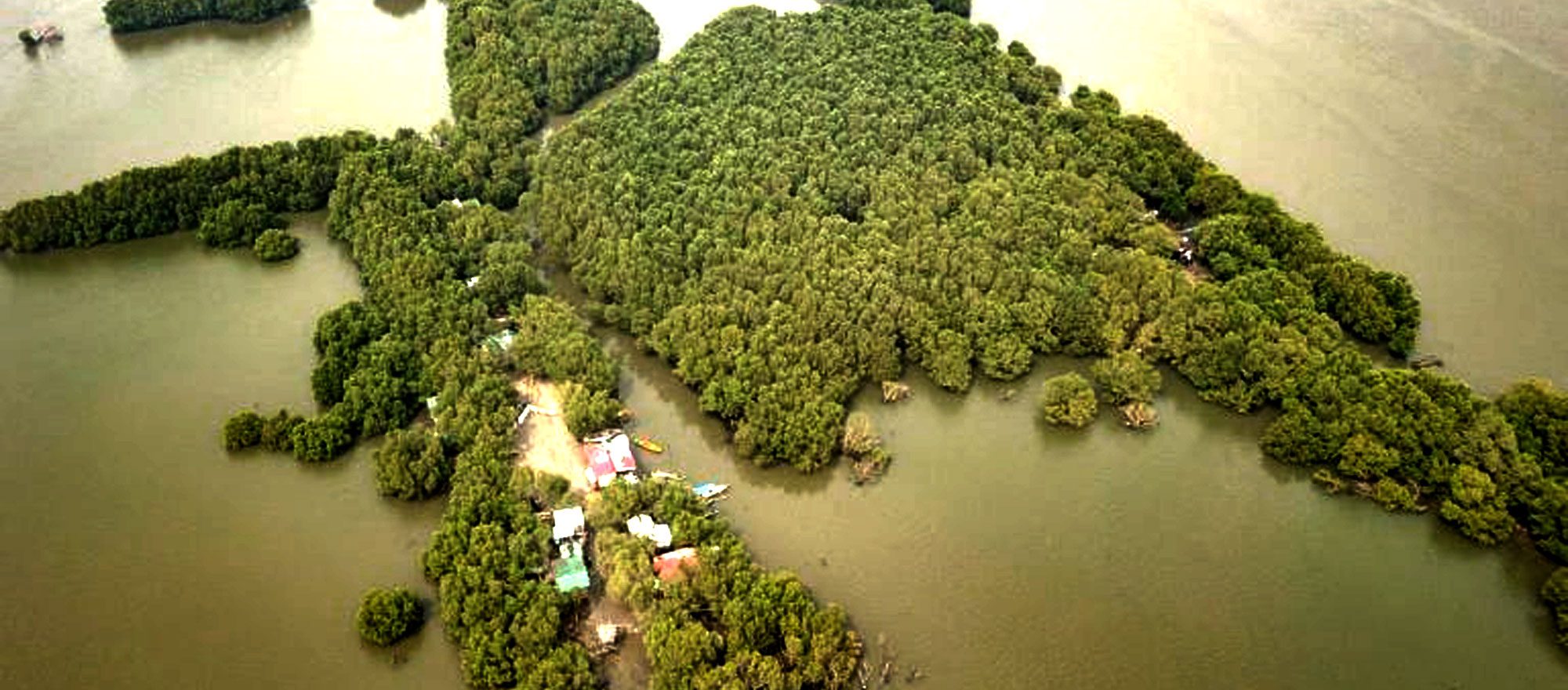

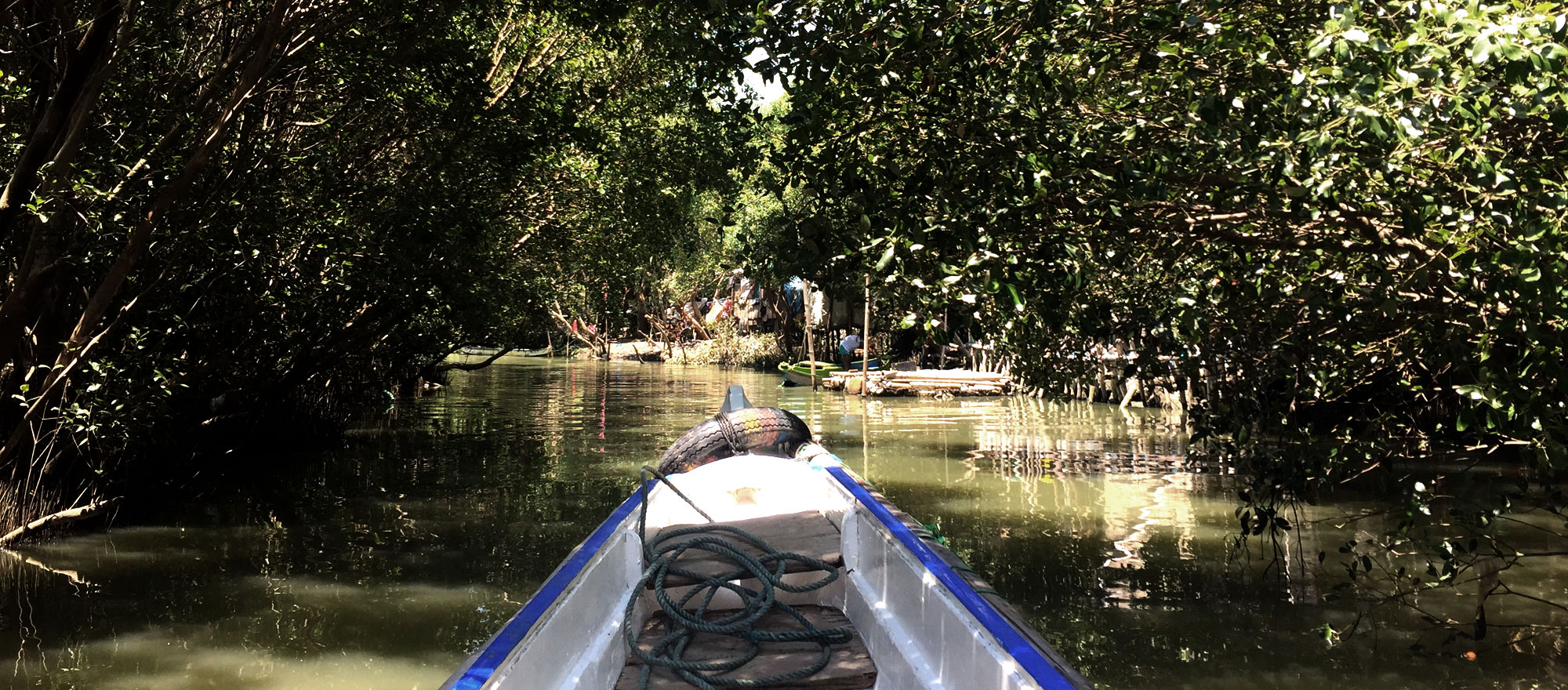
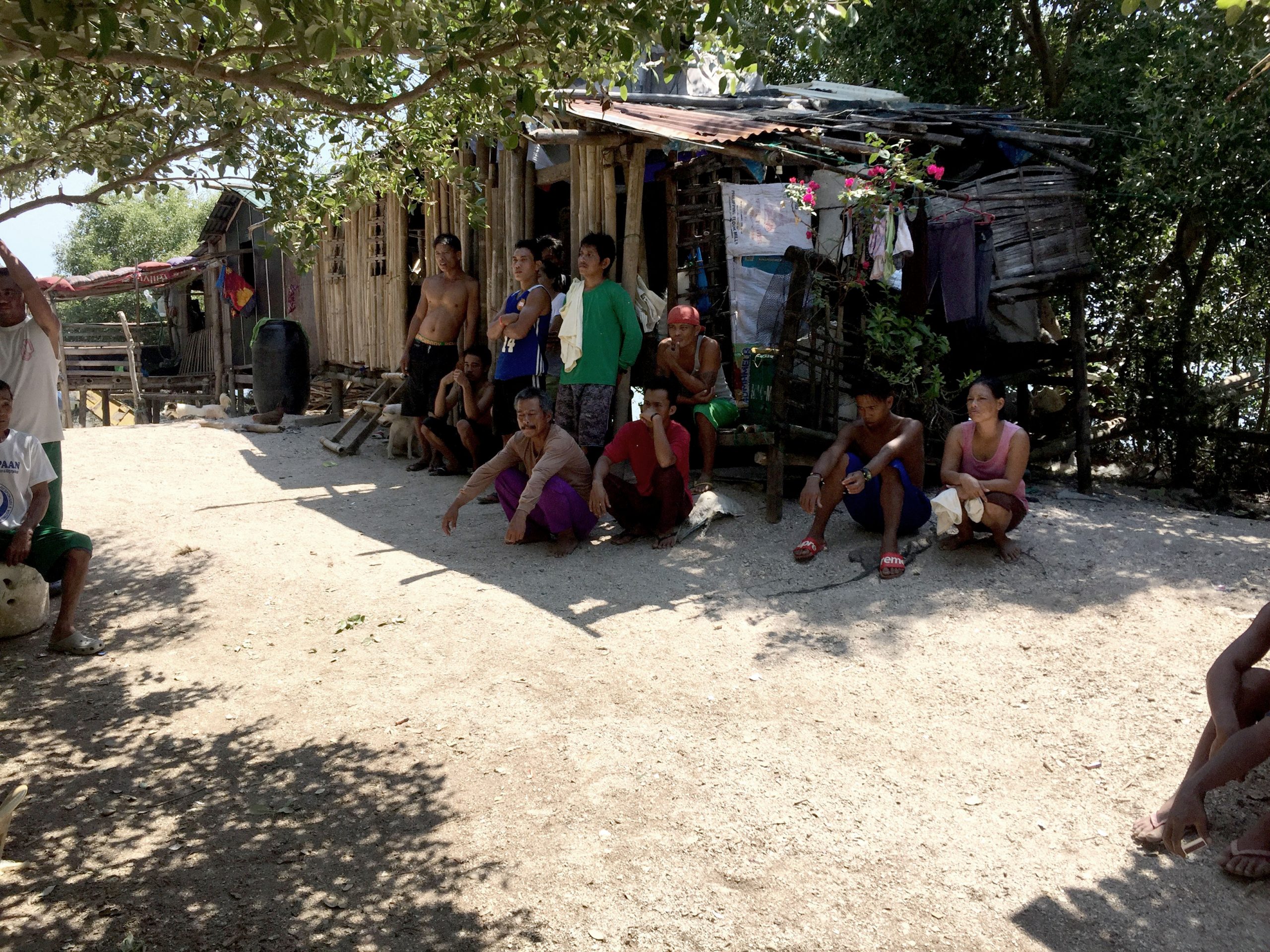


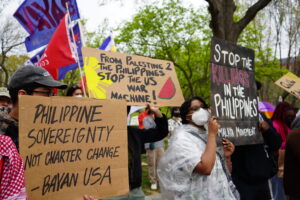



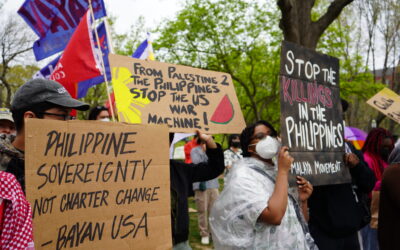

0 Comments